Construction News
22/10/2019
Inaugural PVC4Pipes Conference Showcases Innovation And Sustainability
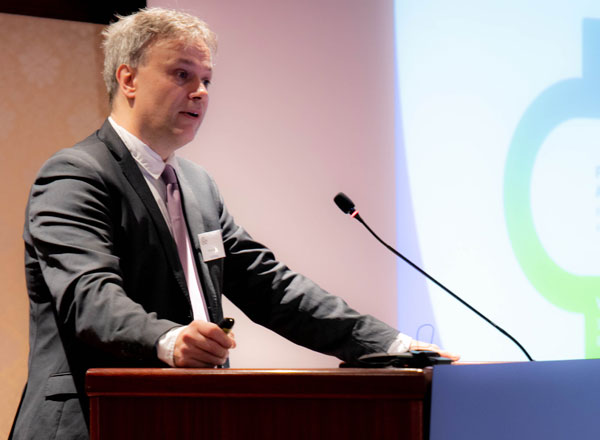
Innovative technical performance and sustainable solutions in the European PVC pipes sector were showcased at the first PVC4Pipes conference, taking the theme 'PVC Pipes in Europe: Delivering sustainable performance for more than 80 years'.
Key themes covered by international experts highlighted how the safety in use, cost-competitiveness, proven durability and recyclability of PVC pipes for water, gas and sewer sectors across the lifetime of the infrastructures have made them a sustainable choice for delivering essential services reliably for more than eight decades.
The event, co-organized with PVC Forum Italia, attracted more than 95 participants from 13 countries, including representatives from the whole supply chain: utilities, pipe manufacturers, compounders, equipment manufacturers, raw material suppliers and certification bodies.
"PVC was the first plastic used to produce pipes industrially in Germany in the 1930s and some of these pipes are still in service today," said Vincent Stone, PVC4Pipes Project Leader. "Ensuring a proper quality to PVC pipes has been a priority for the PVC pipe industry from the very beginning, with the three first quality and testing standards issued in 1941. Comparison studies have shown that the short and long-term performances of these first pipes nearly matched those of modern PVC-U pipes."
In a comprehensive update on the PVC pipes market and trends, Astrid Aupetit from AMI Consulting said the European PVC pipes market accounted for 5.2 million tonnes in 2018 and is growing at over 4.5% annually to 2023. Growth drivers are greater awareness of the benefits of plastic pipes versus other materials and material substitution, with technical innovations widening the potential market. PVC maintains a large market share in most countries, mainly for gravity pipes with more than 55% market share.
In a review of the Circular Economy Network Project exploring the use of recycled plastics in network services, Emilio Caporossi from Gruppo Hera announced the launch of the installation of about 800 m of multi-layer/structured wall PVC sewer pipes including recycled material in Vedrana. Caporossi also mentioned that break rates in Hera's water networks amounted to 0.07 break/km/year for the PVC pipes vs. 0.52 for the PE pipes.
PVC pipes as the smart choice for utilities was illustrated by Alessandro Marangoni of Althesys. He confirmed that PVC-U is the best total cost of ownership performer compared to other non-plastic materials for water and sewer pipes across the lifetime of the infrastructures, which has been shown to exceed 100 years. PVC pipes are around 28% less costly than ductile iron, with the main savings realised on installation costs, and offer significant economic advantages for network owners.
Bruce Hollands, from the Uni-Bell PVC Pipe Association, shared findings from studies evaluating the cost and sustainability of underground piping that can help municipalities to drive their investment decisions. These showed that where alternative PVC pipe materials were chosen, cost savings were achieved, and PVC pipe had the lowest break rate. He concluded: "A sensible local procurement approach can take advantage of changes in pipe materials not only on a cost basis, but also performance characteristics. The case for considering alternative pipe materials that might perform as good or better than conventional pipes used today, and cost less, is compelling."
A session examining regulatory drivers to sustainability included an overview of migration modelling methods to reduce compliance costs for contact with drinking water from Christoph Losher and Peter Mercea, FABES. Mercea said: "Migration modelling can be used to test or screen for compliance quickly and at low costs for various manufacturing scenarios and solutions. For PVC pipes typically showing migration levels far below the detection limits of the most sensitive analytical methods, it is very often the only method that can be used to estimate a migration concentration."
Demonstrating that PVC pipes are 'frontrunners in circularity', Roger Loop, BureauLeiding outlined how the first operational plastic waste collection scheme in the Netherlands is recycling PVC pipe waste for reuse in three-layer sewage pipes. Capable of being recycled up to seven times with no loss of performance, waste PVC material can be recycled and used in new pipes.
He said: "Dutch legal opinion on the end-of-waste status of rigid PVC recyclate has created clarity for converters and this approach might have added value elsewhere. The investment and effort undertaken by VinylPlus in the sustainable development of the European PVC industry is paying off.
The fact that drinking water companies, municipalities and large constructors are using PVC for certain applications as their material of choice demonstrate that the sustainability now is a credible story."
In a last session showcasing PVC pipes innovations, Gianpaolo Contarini from IPM introduced for the first time a game-changing sealing technology allowing to dramatically reduce the intrusion of plant roots in PVC sewer pipes. This worldwide patented technology facilitates the use of PVC pipes in highly cultivated and vegetated areas.
Introducing the VinylPlus® Product Label, a new sustainability certification for PVC products in building and construction, Stefan Eingärtner of VinylPlus said the label enables organisations to 'stamp their sustainability performance as a company, but also in their products'; this sends an important message to brand owners and local authorities on their overall environmental performance.
"The VinylPlus® Product Label is a key tool for PVC pipe manufacturers to demonstrate the sustainable progress we've made and for them to communicate that they are offering a more sustainable solution in PVC to their customers and markets," he added.
Key themes covered by international experts highlighted how the safety in use, cost-competitiveness, proven durability and recyclability of PVC pipes for water, gas and sewer sectors across the lifetime of the infrastructures have made them a sustainable choice for delivering essential services reliably for more than eight decades.
The event, co-organized with PVC Forum Italia, attracted more than 95 participants from 13 countries, including representatives from the whole supply chain: utilities, pipe manufacturers, compounders, equipment manufacturers, raw material suppliers and certification bodies.
"PVC was the first plastic used to produce pipes industrially in Germany in the 1930s and some of these pipes are still in service today," said Vincent Stone, PVC4Pipes Project Leader. "Ensuring a proper quality to PVC pipes has been a priority for the PVC pipe industry from the very beginning, with the three first quality and testing standards issued in 1941. Comparison studies have shown that the short and long-term performances of these first pipes nearly matched those of modern PVC-U pipes."
In a comprehensive update on the PVC pipes market and trends, Astrid Aupetit from AMI Consulting said the European PVC pipes market accounted for 5.2 million tonnes in 2018 and is growing at over 4.5% annually to 2023. Growth drivers are greater awareness of the benefits of plastic pipes versus other materials and material substitution, with technical innovations widening the potential market. PVC maintains a large market share in most countries, mainly for gravity pipes with more than 55% market share.
In a review of the Circular Economy Network Project exploring the use of recycled plastics in network services, Emilio Caporossi from Gruppo Hera announced the launch of the installation of about 800 m of multi-layer/structured wall PVC sewer pipes including recycled material in Vedrana. Caporossi also mentioned that break rates in Hera's water networks amounted to 0.07 break/km/year for the PVC pipes vs. 0.52 for the PE pipes.
PVC pipes as the smart choice for utilities was illustrated by Alessandro Marangoni of Althesys. He confirmed that PVC-U is the best total cost of ownership performer compared to other non-plastic materials for water and sewer pipes across the lifetime of the infrastructures, which has been shown to exceed 100 years. PVC pipes are around 28% less costly than ductile iron, with the main savings realised on installation costs, and offer significant economic advantages for network owners.
Bruce Hollands, from the Uni-Bell PVC Pipe Association, shared findings from studies evaluating the cost and sustainability of underground piping that can help municipalities to drive their investment decisions. These showed that where alternative PVC pipe materials were chosen, cost savings were achieved, and PVC pipe had the lowest break rate. He concluded: "A sensible local procurement approach can take advantage of changes in pipe materials not only on a cost basis, but also performance characteristics. The case for considering alternative pipe materials that might perform as good or better than conventional pipes used today, and cost less, is compelling."
A session examining regulatory drivers to sustainability included an overview of migration modelling methods to reduce compliance costs for contact with drinking water from Christoph Losher and Peter Mercea, FABES. Mercea said: "Migration modelling can be used to test or screen for compliance quickly and at low costs for various manufacturing scenarios and solutions. For PVC pipes typically showing migration levels far below the detection limits of the most sensitive analytical methods, it is very often the only method that can be used to estimate a migration concentration."
Demonstrating that PVC pipes are 'frontrunners in circularity', Roger Loop, BureauLeiding outlined how the first operational plastic waste collection scheme in the Netherlands is recycling PVC pipe waste for reuse in three-layer sewage pipes. Capable of being recycled up to seven times with no loss of performance, waste PVC material can be recycled and used in new pipes.
He said: "Dutch legal opinion on the end-of-waste status of rigid PVC recyclate has created clarity for converters and this approach might have added value elsewhere. The investment and effort undertaken by VinylPlus in the sustainable development of the European PVC industry is paying off.
The fact that drinking water companies, municipalities and large constructors are using PVC for certain applications as their material of choice demonstrate that the sustainability now is a credible story."
In a last session showcasing PVC pipes innovations, Gianpaolo Contarini from IPM introduced for the first time a game-changing sealing technology allowing to dramatically reduce the intrusion of plant roots in PVC sewer pipes. This worldwide patented technology facilitates the use of PVC pipes in highly cultivated and vegetated areas.
Introducing the VinylPlus® Product Label, a new sustainability certification for PVC products in building and construction, Stefan Eingärtner of VinylPlus said the label enables organisations to 'stamp their sustainability performance as a company, but also in their products'; this sends an important message to brand owners and local authorities on their overall environmental performance.
"The VinylPlus® Product Label is a key tool for PVC pipe manufacturers to demonstrate the sustainable progress we've made and for them to communicate that they are offering a more sustainable solution in PVC to their customers and markets," he added.

05/02/2025
Stockport Mayoral Development Corporation (MDC) and ECF, a joint venture between Homes England, Legal & General, and Muse, have selected Vinci as the preferred contractor for Phase 1 of Stockport 8, a £350 million residential development west of Stockport town centre.
The decision follows a competi
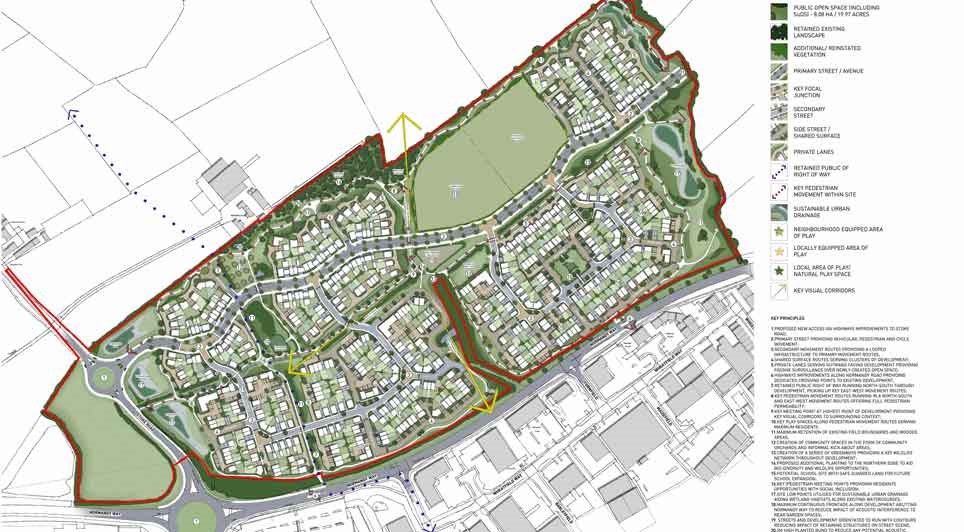
05/02/2025
Vistry Group has finalised contracts for a significant housing development in Hinckley, Leicestershire, securing outline planning permission to deliver 475 new homes in the area.
The development, located east of Stoke Road and north of Normandy Way in the town's northern region, has a projected val
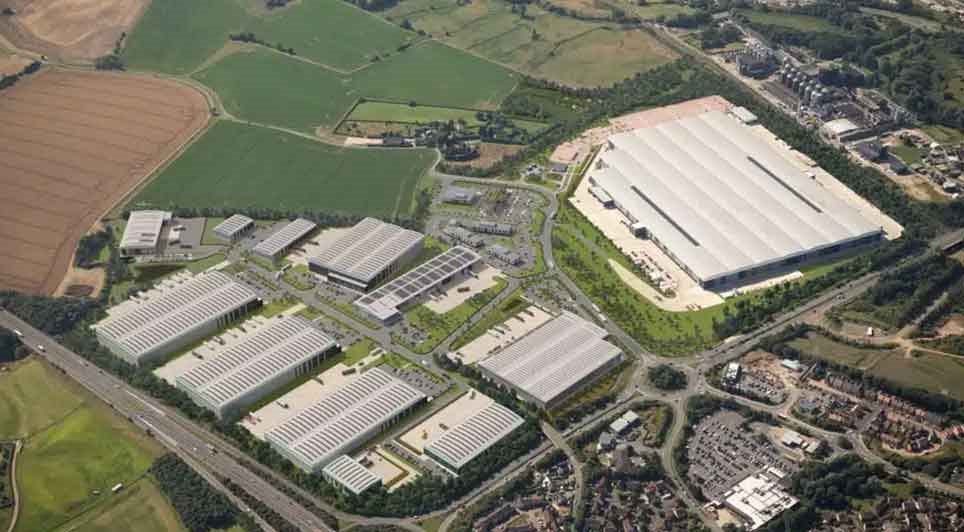
05/02/2025
Wilten Construction has been awarded a second Design and Build contract at Gateway 14 by client Gateway 14 Ltd and Jaynic.
The project involves the development of a state-of-the-art, three-storey Skills and Innovation Centre spanning 35,000 sq ft in the heart of Gateway 14. Designed to achieve BREE
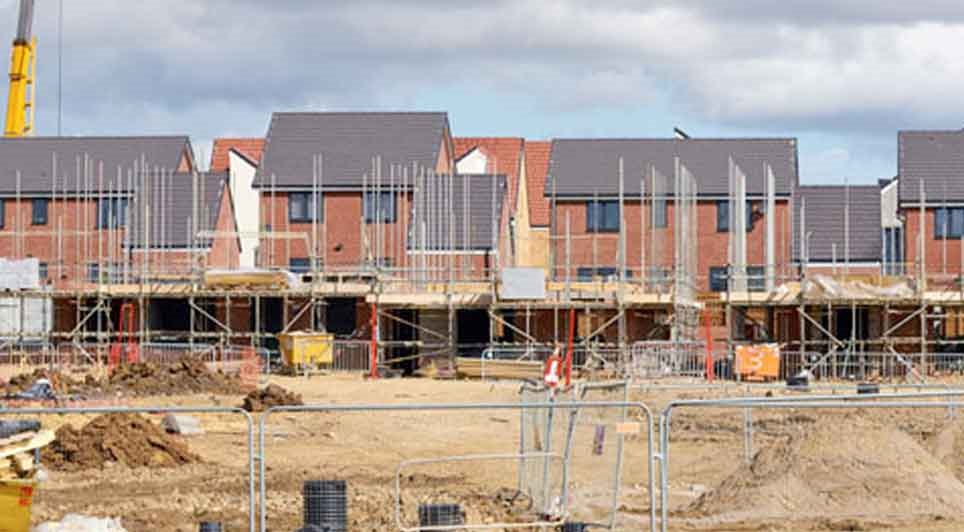
05/02/2025
Knowsley Council has approved a major housing development in Kirkby, giving the green light to 800 new energy-efficient homes in the town's centre.
The decision also secures £7.7 million in Section 106 contributions from developer Barratt David Wilson Homes, further boosting local investment.
The
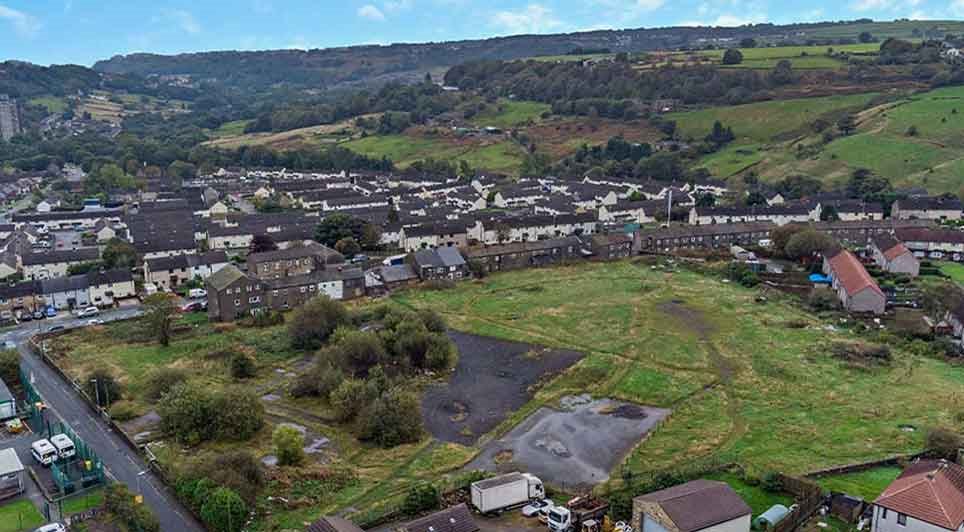
05/02/2025
Keepmoat Homes has announced plans to invest over £50 million in three new housing developments across Calderdale, aiming to deliver more than 200 new homes.
The developments, undertaken in partnership with Calderdale Council, form part of the North Halifax Transformation Programme, a local authori
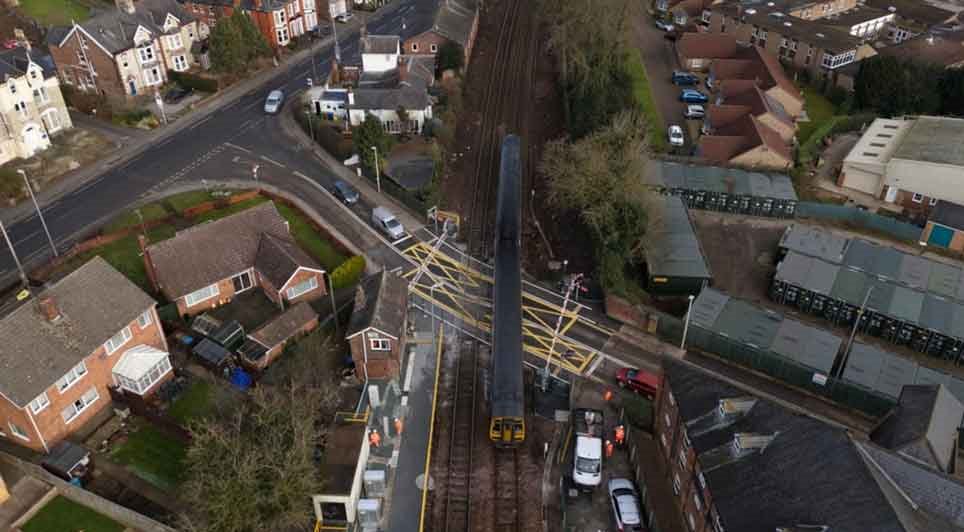
05/02/2025
Essential renewal work at Skerne Road level crossing in Driffield has been completed. Over a six-day period, engineers replaced decades-old equipment, installing a state-of-the-art operating system, replacing the level crossing deck, and resurfacing the road.
The newly installed operating system is
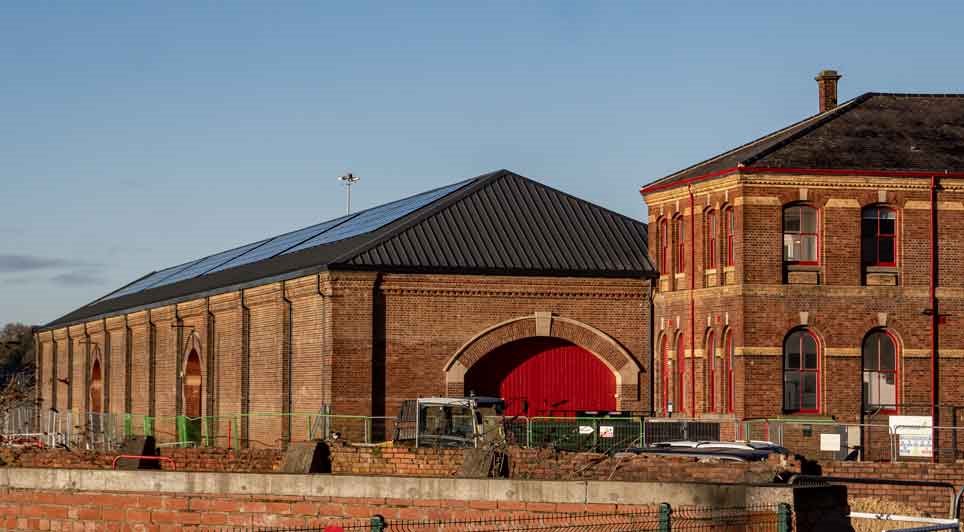
05/02/2025
Construction firm GRAHAM is currently carrying out essential restoration work at the National Railway Museum in York, replacing the Grade II listed roof structure at Station Hall.
Originally built between 1875 and 1877 as a goods station, Station Hall now houses the museum’s six royal carriages.

05/02/2025
Mezzanine floors are commonly associated with additional storage or expanded floor space, but did you know they can also have a profound impact on employee productivity and morale? At Doity Engineering, we specialise in designing and installing mezzanine floors for

05/02/2025
Construction work is commencing on a new solar array at Weeton Barracks in Lancashire that will generate over one third of the site’s energy needs.
The work has been funded under the British Army’s Project Prometheus, a scheme that is increasing renewable energy across the army estate through inst
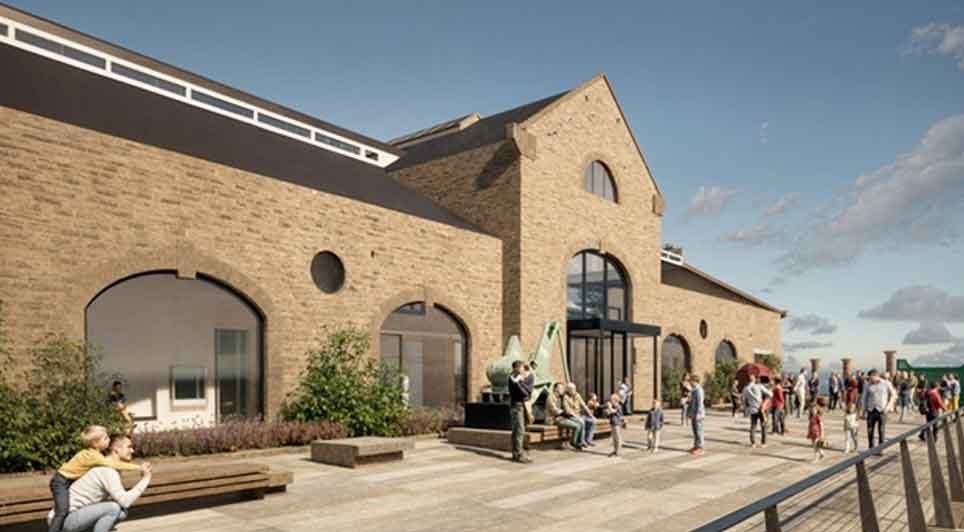
05/02/2025
The regeneration of Hartlepool's waterfront has reached a significant milestone with a £631,000 grant from The National Lottery Heritage Fund.
The funding will support the development phase of the 'Tides of Change' project, aimed at transforming the visitor experience at the Museum of Hartlepool a
 UK
UK Ireland
Ireland Scotland
Scotland London
London











